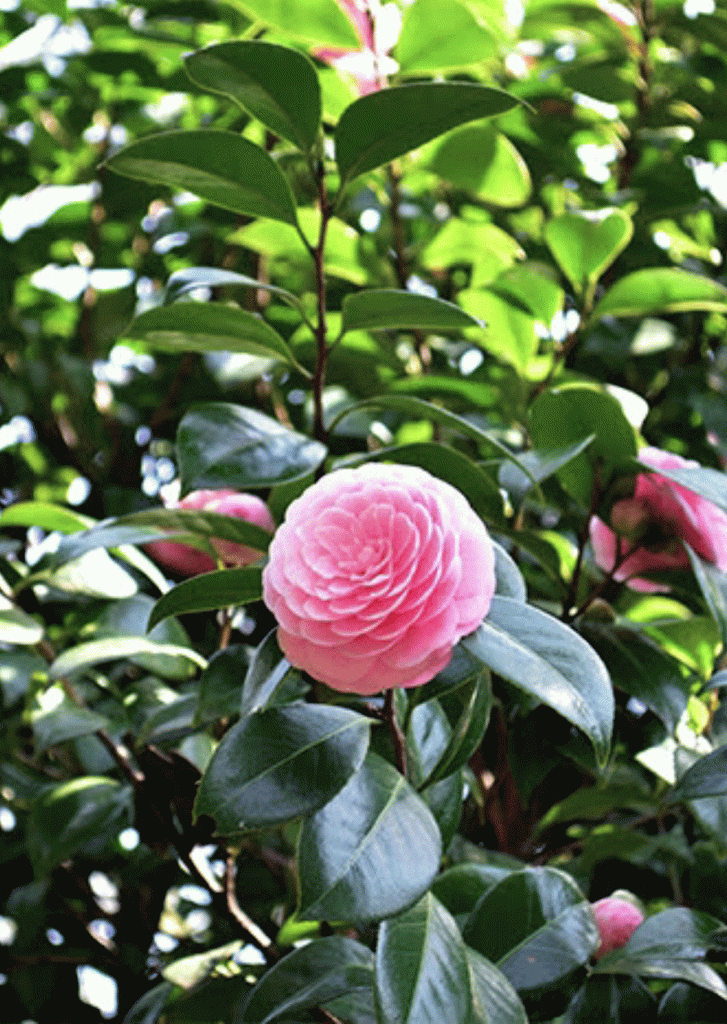
In Yawata City, Kyoto Prefecture, which is famous for Iwashimizu Hachimangu, there is a garden related to Shokado Shojo, a monk and cultural figure in the early Edo period. In the vast garden of 22000 ㎢, there are the thatched house “Shokado” (a cultural property designated by Kyoto Prefecture) and “Izumibo Shoin” (a cultural property registered by Kyoto Prefecture) where Shojo lived, which were moved from Mt Otokoyama. And there’s also a famous Camellia japonica garden, where more than 120 types of camellia are planted. Shojo, who was also a master of the tea ceremony, must have been influenced by Sen no Rikyu. Even if Rikyu’s teaching, which preached that “flowers are in the field,” goes around the park, you can feel it at every corner. The camellia flowers were sought after for their elegance to gently snuggle up to the tea table, rather than the impressive flowers that would change the atmosphere of the room. The camellia that grows in Yamano must have been loved as the “queen of tea flowers.”
石清水八幡宮で有名な京都府八幡市に、江戸時代初期の僧侶で文化人であった松花堂昭乗ゆかりの庭園があります。22000㎢の広大な庭園には、男山の山中から移築した、昭乗が暮らしていた草庵「松花堂」(京都府指定文化財)と「泉坊書院」(京都府登録文化財)があります。またそこには有名な椿園があり、120種類以上の椿が植えられています。茶道にも長じていた昭乗は千利休に影響を受けたに違いありません。「花は野にあるように」と説いた利休の教えが園内を回っていても、端々でかんじとれます。部屋の雰囲気をガラリと変えるような印象的な花ではなく、ささやかに、そっとお茶の席に寄り添う上品さが椿の花に求められたのです。山野に生える椿は「茶花の女王」として愛されてきたのでしょう。
